全球价值链视角下浙江产业集群升级路径选择分析
VIP免费
浙江财经学院硕士学位论文
摘 要
当前,经济的全球化进程不断加速,与全球化相对应的“本地化”也越来越
引起学者们的关注,“地方”概念的重要性日益突出,由此引发了全球价值链下地
方产业集群升级问题的讨论。地方产业集群是提升本地产业竞争力的一种重要途
径,它强调同一产业内部的关联与互动;全球价值链及其治理模式分析强调国际
地域分工中不同产业之间的相互关联,这为发展中国家的产业集群升级提供了一
种新的视角。
地方产业集群正在成为推动国家或地区经济发展的主导力量,随着世界经济
全球一体化的不断深入,中国经济同全球经济的联系日益紧密,中国地方产业集
群的发展也方兴未艾。浙江作为中国东部经济发达的省区,正是内部存在的大量
的产业集群在推动着其经济持续快速发展。浙江的产业集群主要是以内生型产业
集群为主,大多数属于传统产业范畴。随着中国开放程度的加强,浙江的经济也
开始加强了和全球经济的联系,并逐渐融入全球经济,一些产业集群已经嵌入了
全球的价值体系之中,如温州的制鞋业,但这种嵌入一般是从低端道路开始的。
经过初期的快速发展后,浙江的产业集群发展的瓶颈开始凸现,诸如生产要素瓶
颈、创新能力不足等等。在这种背景下如何采取有效措施并借鉴成功的先例的经
验来促进浙江地方产业集群的升级与发展已经成为亟待研究解决的问题。
产业升级有工艺流程升级、产品升级、功能升级和链的升级四种模式;全球
价值链治理模式可分为市场型、模块型、关系型、领导型和科层型。不同的全球
价值链治理模式将对地方产业升级产生不同的影响。本文将产业升级模式与全球
价值链治理结构理论结合起来,从行业的角度把浙江的产业集群分为传统制造部
门、自然资源依存部门、复杂产品制造部门和专业化供应部门四种类型,讨论了
在加入全球价值链这个新变量的条件下,四种类型的产业集群如何嵌入全球价值
链,嵌入全球价值链以后受到价值链治理模式怎样的影响,以及如何协调价值链
治理结构,不断实现自身的升级。同时本文分析了全球价值链上的比较利益陷阱,
这有可能导致浙江大部分产业集群嵌入全球价值链后被“锁定”在低端环节,使
产业结构固化在加工制造环节,可以实现工艺流程升级和产品升级,但很难实现
功能升级和链的升级。相反,如果不嵌入全球价值链,就有被全球经济“边缘化”
的危险。
III
浙江财经学院硕士学位论文
本文将产业升级模式与全球价值链治理结构理论结合起来,选取西班牙鞋业
集群和温州鞋业集群两个案例做对比分析,通过西班牙鞋业集群的研究,总结其
成功经验,这对浙江的产业集群的升级提供了宝贵的经验。温州鞋业集群处于全
球价值链的低端环节,其发展正经历着一个转折时期,如何借鉴成功经验,实现
在全球价值链上的攀升,对温州鞋业集群的持续、健康发展有着重要意义。
关键词:全球价值链;产业集群;集群升级;治理;浙江
ABSTRACT
IV
浙江财经学院硕士学位论文
At present, along with the accelerating process of globalization, localization, its
counterpart, attracts more and more attention from the scholars, and the importance of
the concept of “localization” comes to the surface, which, in turn, causes arguments
about the upgrading of local industrial cluster within the GVC(Global Value Chains).
Local industrial cluster, which emphasizes the connection and transaction within one
industry, is one of the most important methods to promote the competitive power of
local industries; Global Value Chains with its governance style analysis lays emphasis
upon the connection between different industries of international division, which
provides the industrial cluster in developing countries with a fresh perspective.
Local industrial cluster has being become the leading force to promote national or
regional economic development. Along with the deepening globalization of the world
economy, China’s economy is getting more and more involved in the world economy
and the development of China’s regional industrial cluster is on flowing. Zhejiang, one
of the developed provinces in the east of China, is promoting its economic development
at a high speed with its numerous industrial clusters. Its industrial clusters, mainly
inner-brewed ones, on the most part, belong to the scope of traditional industry. Along
with China’s reinforced opening-up to the outside world, the economy of Zhejiang
province begins to strengthen its ties with the global economy and gradually get
emerged into it. Some of the industrial clusters such as the shoe-industry of Wenzhou,
have been merged into the global value system, but this kind of merge generally remains
at lower level at the start. After the rapid development at earlier stage the bottlenecks of
its development begin to emerge, including productive elements bottleneck and the lack
of creative power. Under such circumstances, how to take efficient method and borrow
advanced experience to promote the upgrading and development of Zhejiang local
industrial clusters becomes the urgent problem to solve.
There are four patterns of upgrading for local industries in terms of innovation
points: process upgrading, product upgrading, functional upgrading and inter-sectional
upgrading. The typology of value chain governance has been analytically identified as
five basic types: Market, Modular value chains, Relation value chains, Captive value
chains and Hierarchy. Different type of governance may has different influence in terms
V
浙江财经学院硕士学位论文
of local industries clusters. This thesis, connecting industrial upgrading pattern and
GVC theory, from the perspective of industry, divides Zhejiang industrial clusters into
four groups: traditional industry, natural source-based industry, complicated industry
and special supplying industry. It also concerns how on the new condition of
participating the GVC, all the four groups get merged into the GVC, what kind of
influence they would get from the GVC , how to harmonize the governance structure of
the GVC and ceaselessly upgrade themselves. In the meantime, this thesis also analyzes
the compare interest trap on the GVC, which may lead to the result that most of the
industrial cluster in Zhejiang can be locked-in at the lower level, the industrial structure
will be fixed on the elementary industrial level, it may achieve the upgrading of
process and product but not functional and inter-sectional upgrading. On the contrary,
we are facing the risk of being edged by the global economy, unless we get merged into
the GVC.
This thesis will connect the industrial upgrading pattern and GVC structure theory,
make comparative analysis on the two instances, Spanish Shoe-industrial Cluster and
Wenzhou Shoe-industrial Cluster, and through research on the Spanish Shoe-industrial
Cluster, summarize the successful experience for the upgrading of the Wenzhou
Shoe-industrial Cluster. The Wenzhou Shoe-industrial Cluster still remain at the lower
level of GVC and is going through a transient stage. How to borrow the successful
experience to achieve upgrading in the GVC has great significance to the sustainable
and healthy development of Wenzhou Shoe-industrial Cluster.
Key words: GVC; Industrial clusters; Cluster upgrading;Governance; Zhejiang
目录
VI
浙江财经学院硕士学位论文
第一章 绪论 .......................................................... 1
第一节 研究背景与目的 ............................................ 1
第二节 理论与现实意义 ............................................ 2
第三节 研究方法与主要内容 ........................................ 3
第二章 全球价值链理论的形成、发展与相关理论综述 ..................... 5
第一节 全球价值链理论的形成与发展 ................................ 5
第二节 国内全球价值链研究的进展 .................................. 7
第三节 全球价值链理论框架 ........................................ 8
第四节 本章小结 ................................................. 11
第三章 全球价值链理论与地方产业集群升级 ............................ 12
第一节 全球化背景下的地方产业集群 ............................... 12
第二节 全球价值链上的比较利益陷阱 ............................... 13
第三节 全球价值链与产业集群升级动力 ............................. 16
第四节 全球价值链下产业集群升级的路径 ........................... 18
第四章 全球化下的浙江产业集群 ...................................... 22
第一节 浙江产业集群的演化 ....................................... 22
第二节 浙江产业集群的特点 ....................................... 24
第三节 浙江内生型传统产业集群形成原因的思考 ..................... 25
第四节 全球化下浙江产业集群发展面临的问题 ....................... 26
第五节 浙江产业集群的分类与升级路径选择 ......................... 27
第五章 全球化下的西班牙鞋业集群与温州鞋业集群 ...................... 33
第一节 全球化下的西班牙鞋业集群 ................................. 33
第二节 全球化下的温州鞋业集群 ................................... 37
第三节 温州鞋业集群升级路径选择分析 ............................. 41
第六章 结论......................................................... 43
第一节 主要研究结论 ............................................. 43
第二节 本文的创新之处与不足 ..................................... 44
参考文献............................................................ 46
附录................................................................ 49
致谢................................................................ 50
VII
浙江财经学院硕士学位论文
第一章 绪论
VIII
摘要:
展开>>
收起<<
浙江财经学院硕士学位论文摘要当前,经济的全球化进程不断加速,与全球化相对应的“本地化”也越来越引起学者们的关注,“地方”概念的重要性日益突出,由此引发了全球价值链下地方产业集群升级问题的讨论。地方产业集群是提升本地产业竞争力的一种重要途径,它强调同一产业内部的关联与互动;全球价值链及其治理模式分析强调国际地域分工中不同产业之间的相互关联,这为发展中国家的产业集群升级提供了一种新的视角。地方产业集群正在成为推动国家或地区经济发展的主导力量,随着世界经济全球一体化的不断深入,中国经济同全球经济的联系日益紧密,中国地方产业集群的发展也方兴未艾。浙江作为中国东部经济发达的省区,正是内部存在的大量的产业...
相关推荐
-
跨境电商商业计划书模版VIP免费
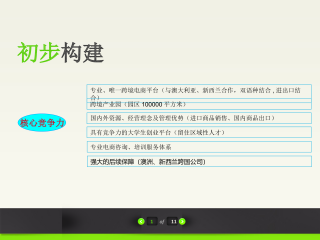
 2025-01-09 27
2025-01-09 27 -
跨境电商方案范文VIP免费
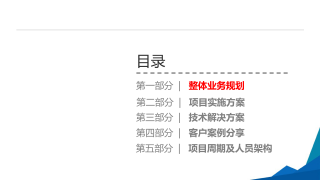
 2025-01-09 14
2025-01-09 14 -
创业计划书VIP免费
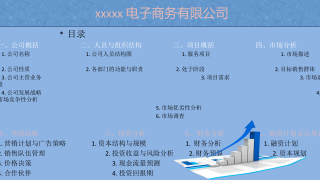
 2025-01-09 18
2025-01-09 18 -
xx生鲜APP计划书VIP免费

 2025-01-09 12
2025-01-09 12 -
跨境电商创业园商业计划书(盈利模式)VIP免费
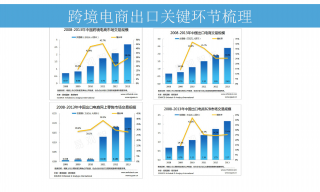
 2025-01-09 8
2025-01-09 8 -
跨境电商计划书VIP免费
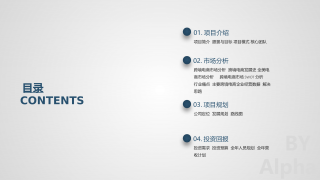
 2025-01-09 13
2025-01-09 13 -
绿色食品电商平台项目计划书VIP免费

 2025-01-09 22
2025-01-09 22 -
农产品电子商务商业计划书VIP免费

 2025-01-09 9
2025-01-09 9 -
农村电商平台商业计划书VIP免费
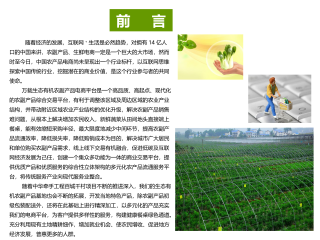
 2025-01-09 13
2025-01-09 13 -
生鲜商城平台商业计划书VIP免费
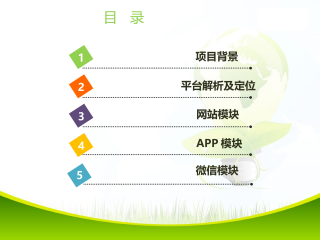
 2025-01-09 21
2025-01-09 21
作者:李江
分类:高等教育资料
价格:150积分
属性:55 页
大小:645.25KB
格式:PDF
时间:2024-09-25






